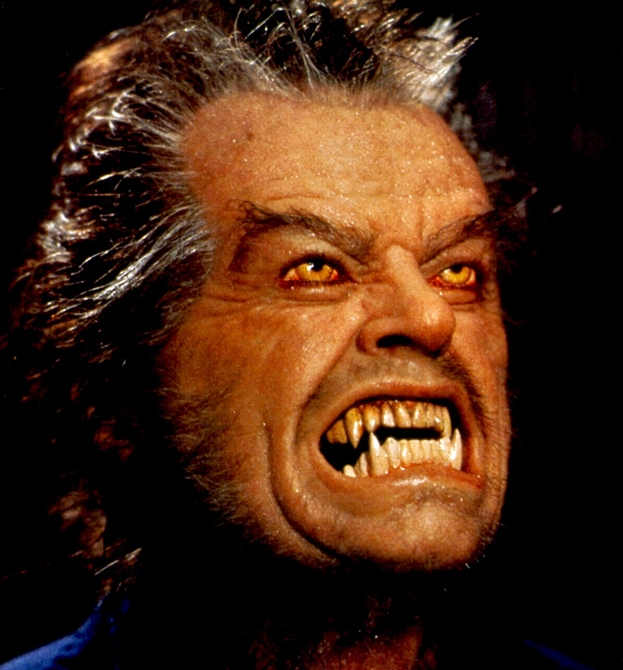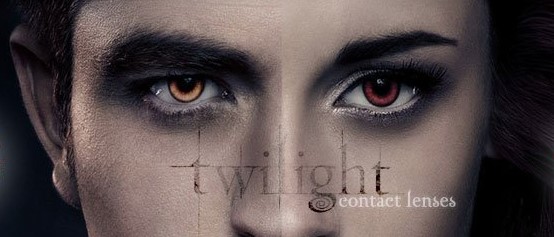What do the Incredible Hulk, Dracula and Mr. Saturday Night (Billy Crystal’s screen persona) all have in common?
Each depends on the talents of an alumnus of the Pennsylvania College of Optometry (PCO) to achieve the illusion of change in the appearance of the eye. Dr. Rick Silver, ’79 is that alumnus.
 Dr. Silver, who works on more routine contact lenses in his two California practices (Santa Monica and Sherman Oaks), began his special effects work through a partnership practice with Morton Greenspoon, OD, a pioneer in the use of cosmetic contact lenses best known for his work with Michael Jackson’s “Thriller.” Dr. Silver has taken his special effects resources back to these practices, however, and developed a niche of hand-painted soft prosthetic lenses to mask such conditions as scarred corneas and irregular pupils.
Dr. Silver, who works on more routine contact lenses in his two California practices (Santa Monica and Sherman Oaks), began his special effects work through a partnership practice with Morton Greenspoon, OD, a pioneer in the use of cosmetic contact lenses best known for his work with Michael Jackson’s “Thriller.” Dr. Silver has taken his special effects resources back to these practices, however, and developed a niche of hand-painted soft prosthetic lenses to mask such conditions as scarred corneas and irregular pupils.
From his first assignment – TV’s Incredible Hulk (1988) – Dr. Silver has gone on to amass an impressive list of television and screen credits. His other television projects have included part man, part computer Max Headroom, as well as Geordi and the android Data on the current “Star Trek: The Next Generation.”
Dr. Silver said a recent story line presented a particular challenge. It called for Geordi, a blind crew member of a starship who “sees” with the aid of a futuristic electronic visor, to show his eyes for the first time. Dr. Silver’s lenses had to make actor LeVar Burton’s very dark eyes fully opaque to achieve the startling appearance desired.
Dr. Silver was mentioned by name on last year’s Academy Awards broadcast (the one Billy Crystal hosted), when makeup artist Greg Cannon thanked him for his help in capturing his award for best special effects and makeup for “Bram Stoker’s Dracula.” During the six months the two worked together, about 10 pairs of scleral shells were fit, designed, and hand painted. Dr. Silver said these scleral shells are molded lenses that are as large as the entire orbit of the eye – about 25 millimeters, versus eight to nine millimeters for a regular lens.
 Actor Gary Oldman wore them to help achieve such effects as changing into a bat or werewolf, or aging hundreds of years. Dracula’s “brides” wore bright lavender shells, accented with large, dilated conjunctival vessels to enhance their bloodthirsty scenes.
Actor Gary Oldman wore them to help achieve such effects as changing into a bat or werewolf, or aging hundreds of years. Dracula’s “brides” wore bright lavender shells, accented with large, dilated conjunctival vessels to enhance their bloodthirsty scenes.
“Death Becomes Her,” another movie Dr. Silver worked on, won an Academy Award for visual effects. Soft opaque lenses were used to make Goldie Hawn and Meryl Streep look dead, as well as to give them bright sapphire and lavender eyes when a magic potion returned them to their “eternal” young bodies.
Dr. Silver also helped Uma Thurman look blind in “Jennifer Eight,” and helped Billy Crystal age 50 years in “Mr. Saturday Night.” While Dr. Silver’s cinematic sideline seemed like it would be unique among PCO grads, it’s not. For the portions of “Mr. Saturday Night” shot in New York, Dr. Mitch Cassel, ’82, took care of Billy Crystal. Drs. Silver and Cassel, who has himself worked on such films as “Days of Thunder” and “The Firm,” commonly share projects that require such “bi-coastal” coverage.
Dr. Silver’s newest assignment included dream sequences in Oliver Stone’s “Heaven and Earth,” which opened in theaters recently, and “Wolf,” with Jack Nicholson and Michelle Pfeiffer, which finished shooting in August. And, remember when you see Nicholson and Pfeiffer turn into werewolves later this spring, it’s a PCO alumnus making it possible.
Today, Dr. Silver continues to practice in Santa Monica, Ca. and continues to be a consultant to major film studios and production companies. Most recently, he worked on “Twilight” in 2008 and has been featured on television shows “Extra” and “Entertainment Tonight”, along with magazine publications, “TIME” and “People.”
